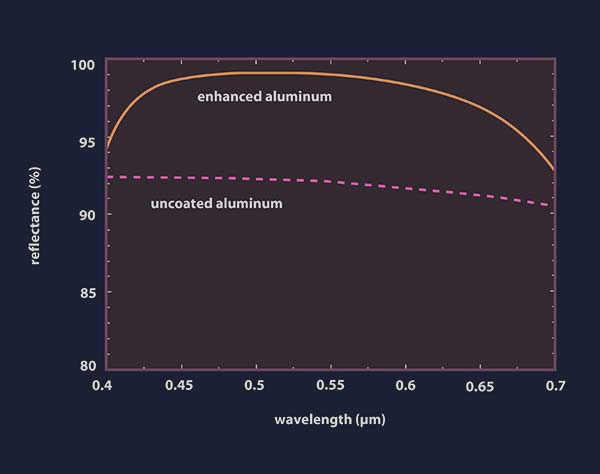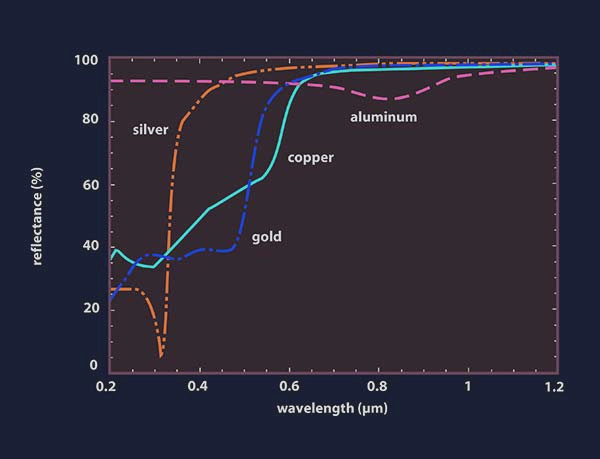

The basic difference between the household mirror and therefore the optical mirror is that one is coated on the rear surface and the other is coated on the front. For optical applications, a front-surface mirror must be used. this suggests that the reflective surface is subject to environmental degradation, albeit it's usually in an indoor environment and not exposed to the tough conditions of the household mirror. a crucial part of mirror technology is providing a durable front-surface mirror that's stable and may be cleaned.
A mirror’s substrate surface should be flat and smooth. The flatness is typically laid out in terms of what percentagewavelengths of sunshine the surface deviates from being an ideal plane. for several applications, the glass is often flat to a couple of wavelengths of light. For the foremost stringent applications, the surface must be flat to 1 / 4 of a wavelength or less. The surface quality of a mirror, or its smoothness, is measured in terms of scratches and digs that are still present after polishing. A scratch/dig specification of 80/50 is fairly routine, while a specification of 20/10 is far better, but costlier.
For some applications, a mirror’s ability to conduct heat is vital. In these cases, metal substrates are often used because metal is far more conductive than glass. Optical-quality metal surfaces are often fabricated by polishing or single-point diamond turning. the foremost common metals used are copper and aluminum. Although beryllium is very toxic, it's used when especially lightweight, stiff mirrors are required. within the case of metal substrates, the coating improves the reflectance and makes the surface more durable and immune to scratches.
The simplest and commonest mirror coating may be a thin layer of metal. A 100-nm layer of aluminum or silver makes a superb reflector for the color spectrum. Aluminum reflects about 90 percent of the sunshine across the color spectrum, while silver reflects about 95 percent. The reflectance of a metal mirror is often calculated from the index of refraction n and therefore the extinction coefficient k of the metal. The reflectance of a metal surface in the air is given by:

Across the color spectrum, silver is that the most reflective. For UV applications, like telescope mirrors, silver is unacceptable and aluminum is that the most suitable option. Unfortunately, aluminum suffers within the region from 0.8 to 1.0 μm, where the reflectance dips well below 90 percent. In an optical system with several mirrors, this will be detrimental to performance. For a reflectance of 85 percent, a system with five mirrors would have a throughput of only 44 percent.

(The reflectance of several shiny metals vs. wavelength from 0.2 to 1.2 μm. )
Copper and gold are useful only within the red and IR spectral regions. For situations involving higher durability, less shiny metals are adequate. for instance, rhodium is employed for dental mirrors, and chromium is employed for rearview mirrors in cars.
Aluminum is fairly stable as a mirror, but silver tarnishes quickly unless kept during a dry, contamination-free environment. for instance, a silver mirror which will last for months in Albuquerque, N.M., may degrade within each day in Orlando, Fla. If high reflectance is required only beyond 0.6 or 0.7 μm, gold may be a good selection because of its environmentally stable. However, even an unprotected aluminum or gold mirror cannot withstand cleaning with anything but the foremost gentle plant disease or camel hairbrush.
A solution to degradation is overcoating the mirror with a dielectric material that's harder than the metal surface. a standard overcoat material for visible mirrors is silicon monoxide (SiO). A mirror with an easy dielectric overcoat is named a protected metal mirror. Environmentally stable silver mirrors are often made by including various overcoat layers.4
A more complicated coating is often wont to increase the reflectance of a metal mirror. Such a coating would contain several dielectric layers with alternating high and low indices of refraction. the primary layer usually features a low index and therefore the last layer, a high index. this sort of mirror is named an enhanced metal mirror or an enhanced reflector. With four layers, the reflectance are often enhanced several percent over a limited spectral region

(The reflectance of an enhanced aluminum mirror vs. wavelength compared with the reflectance of an uncoated aluminum surface. the improved mirror includes four alternating layers of silica and titanium oxide .)
1. Handbook of Optical Constants of Solids. Edward D. Palik, ed. (1985). Academic Press.
2. Handbook of Optical Constants of Solids II. Edward D. Palik, ed. (1991). Academic Press.
3. Handbook of Optical Constants of Solids III. Edward D. Palik, ed. (1998). Academic Press.
4. Wolfe, Jesse D., Ronald E. Laird, C.K. Carniglia and J.P. Lehan (1995). Durable silver-based antireflection coatings and enhanced mirrors. OPTICAL INTERFERENCE COATINGS, 1995 Technical Digest Series, 17:115-117.
Name: Sales Department
Mobile:+8613019214973
Tel:86-431-81905988
Whatsapp:+8618043023344
Email:sales@china-optics.biz
Add:No.3 Shenzhen street, Economic and Technology Development Zone ,Changchun China
We chat
